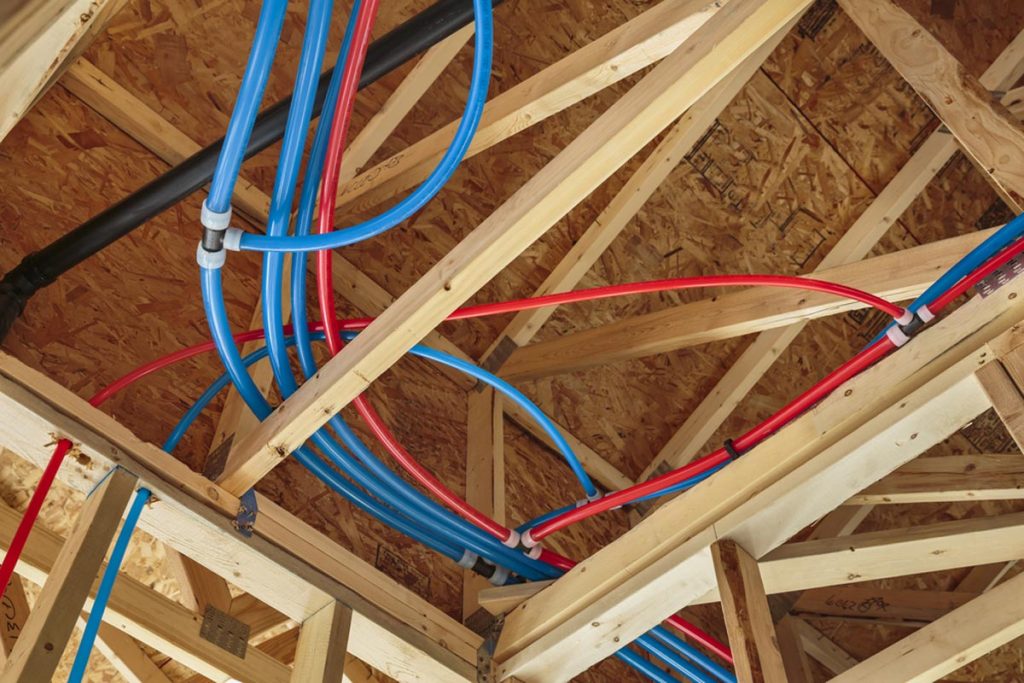
If your home has poor water pressure, it may be time for a repipe. Water pressure problems indicate old, outdated pipes prone to leaks and corrosion.
Fortunately, repiping your house can improve water quality and reduce the risk of costly repairs. But how much will it cost?
Cost of Materials
Even though a home’s plumbing pipes are sturdy and long-lasting, they will still deteriorate over time. When this happens, a plumber will need to replace them. This can be done with copper, cross-linked polyethylene (PEX), or chlorinated polyvinyl chloride (CPVC). Depending on which type of pipe is chosen, this can significantly impact the cost of a home’s repiping project.
The number of plumbing fixtures in a home also affects the repiping cost. Each fixture will require a specific amount of piping materials to run correctly. For example, a shower will need more piping material than a toilet. Additionally, installing a new water heater as part of the repiping process will increase the overall cost.
Finally, if any plumbing is located in hard-to-reach areas, repipe costs will increase. This is because a plumber will take more time and effort to access these parts of the house. For this reason, hiring plumbers who specialize in repipe projects is essential.
The majority of repiping costs are attributed to labor charges. Plumbers typically charge hourly, but some prefer to offer a per-project bid. Additionally, homeowners must consider any additional fees that could be added to the project, such as inspections, permits, and replacement of appliances.
Cost of Labor
The pipes that deliver water to your home have a limited lifespan. Over time, they can become corroded and develop cracks and holes that lead to water leaks. If you notice these issues in your home, consider repiping. If left unattended, these problems can cause severe damage and lead to mold growth, which is dangerous for your health.
Repiping is a complex task that requires the services of a skilled plumber. Plumbing pros generally charge hourly for their work, and the labor cost can increase significantly if they need to cut through walls or ceilings. In addition, the more fixtures you have in your home, the more piping material you’ll need to replace, which also increases the project’s overall home repipe cost.
Repipes are an excellent way to improve your home’s water quality and boost its value. In addition, the process can save you money on your water bill and prevent costly repairs in the future. However, the cost of repiping your home can be daunting for some homeowners.
Cost of Permits
In some regions, homeowners may be required to obtain permits and undergo inspections before repiping their homes. This can add to the overall cost of the project. If homeowners want to minimize repiping costs, they should choose a plumbing company that uses its in-house plumbers rather than subcontractors. This will ensure that the recipe is done correctly and quickly.
Another factor influencing the cost of repiping a house is its number of plumbing fixtures. A more significant number of fixtures typically requires more pipes and fittings, increasing the total cost of repiping. Homeowners should consider whether or not they would like to install new fixtures as part of their repipe project. This can save them money in the long run, as they will only have to pay for labor once instead of twice.
The age of the home’s pipes can also impact repipe costs. If the pipes are older, they are likely to be corrupted or have leaks. Repiping with modern materials such as PEX can help reduce these problems and save homeowners money in the long run. Homeowners should consult a professional to determine the best type of pipe for their needs.
Cost of New Fixtures
When pipes show signs of wear and tear, it is time to consider repiping your home. This critical home improvement project replaces old, damaged pipes with new ones, ensuring a safe and reliable water distribution system.
The cost of repiping your home will depend on several factors, including the type of pipes used, the size of your house, and the number of plumbing fixtures. Copper, PEX, and Chlorinated Polyvinylchloride (CPVC) pipes are the most common choices for residential repiping projects. Each has advantages and disadvantages, and homeowners should choose the best option.
Homeowners may also need to install additional fixtures, such as a laundry room washer, dryer, or outdoor faucets. These additional fixtures increase the demand on the existing pipes and can add to the overall cost of repiping your home. It is also important to note that some areas of the home may require more pipes than others due to higher water usage.
Many homeowners are hesitant to undertake a repiping project because of the costs involved, but you must do so to ensure a safe and efficient plumbing system. Repiping your home can prevent costly plumbing repairs and water damage down the road, so it is a worthwhile investment for your family’s health and comfort.
